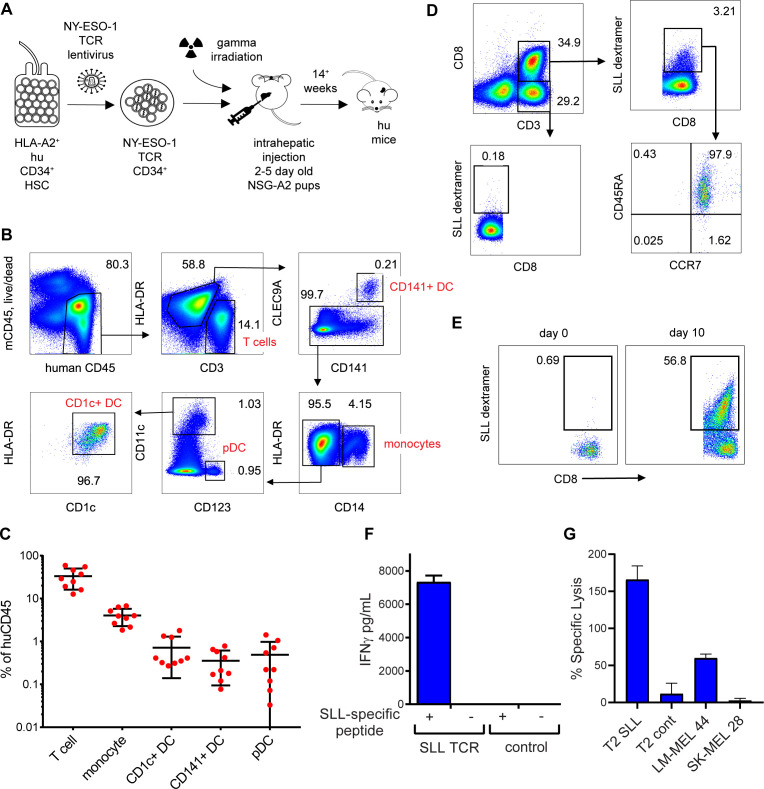Figure 4.
Development of naïve NY-ESO-1 SLL-specific CD8+ T cells in humanized mice. (A) Schematic showing generation of humanized mice following lentiviral transduction of human CD34+ progenitors. (B) Representative flow cytometry plots showing development of human T cell and antigen-presenting cell subsets in the spleens of humanized mice. (C) Frequencies of human hematopoietic subsets expressed as a percentage of human CD45+ cells. (D) Representative flow cytometry plots showing NY-ESO-1 SLL-specific CD8+ T cells (SLL dextramer+) in the spleens of humanized mice, the majority of which express a naïve phenotype (CD45RA+CCR7+). (E) Expansion NY-ESO-1 SLL-specific (SLL dextramer+) CD8+ T cells following 9 days culture of splenocytes from T cell receptor (TCR) lentivirus-transduced mice with SLL peptide-pulsed allogeneic irradiated lymphoblastoid cell lines (LCLs). (F) Interferon γ (IFNγ) production by splenocytes from humanized mice expressing NY-ESO-1 SLL TCR or not (control) following 3 days activation with cognate SLL peptide-pulsed allogeneic irradiated LCLs (+) or no antigen (-). (G) Lysis of SLL or control peptide pulsed T2 targets HLA-A*0201+NY-ESO-1+ (LM-MEL 44) or HLA-A*0201-NY-ESO-1- (SK-MEL 28) target cancer cells by expanded NY-ESO-1 SLL-specific CD8+ T cells. Data are the mean±SD from three replicates. DC, dendritic cell; NY-ESO-1, New York esophageal squamous cell carcinoma 1.

